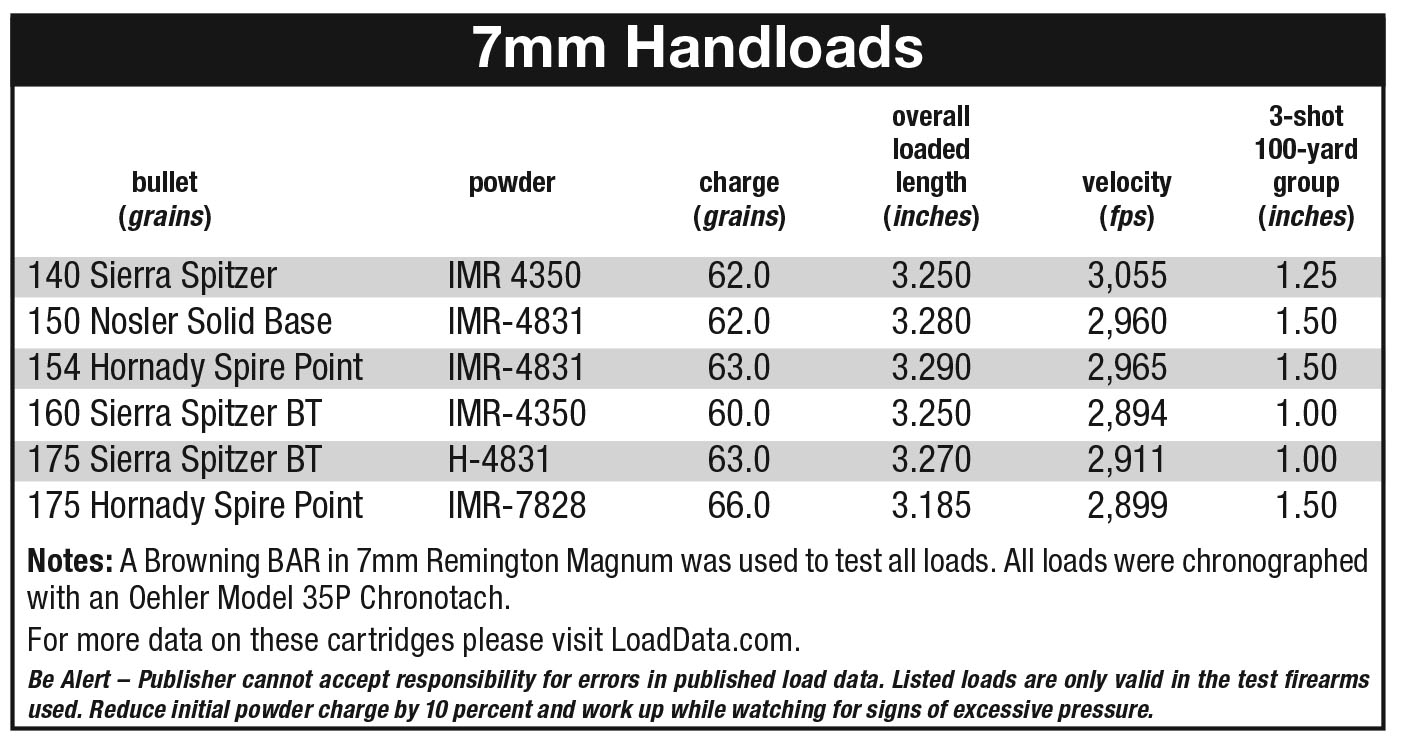Browning’s BAR - Ask the Man who has One!
other By: Stan Trzoniec | January, 26
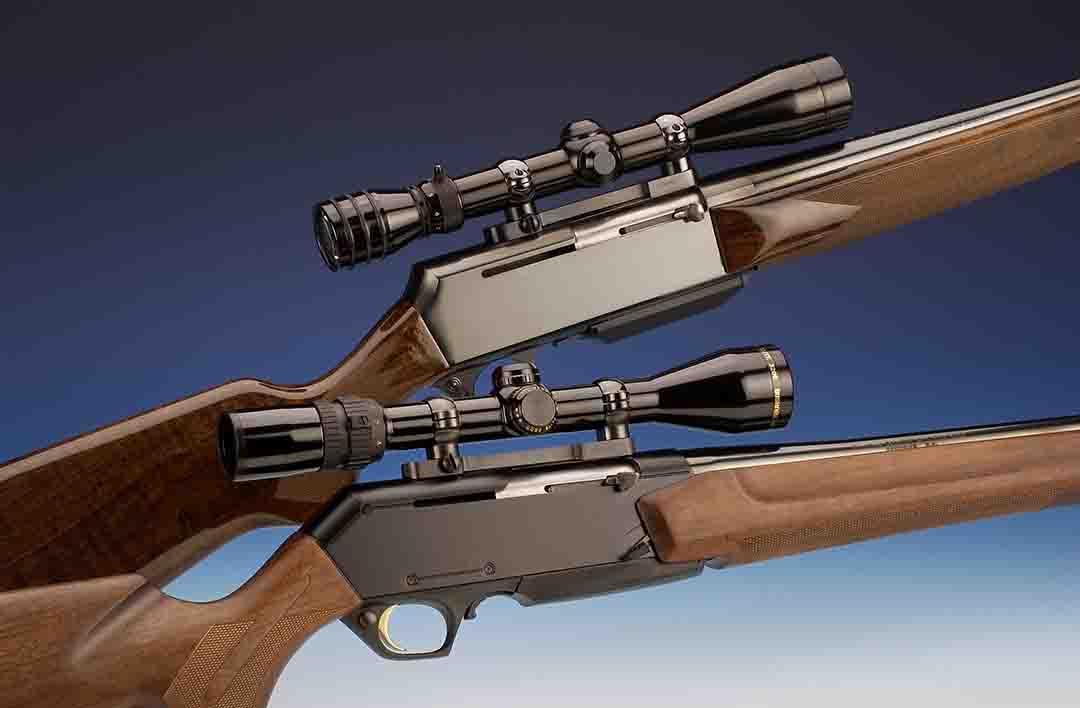
Friend Joe Pirani was a Browning fan from the word go. He had Browning Superposed shotguns for field and trap and when it came to rifles, he was stuck on the BAR (Browning Automatic Rifle) that went with him on all his hunting trips. When we did get to serious discussions relating to the gun on an antelope/mule deer hunt near Jordon, Montana, many years back he told me, “It is dependable, accurate, but most of all, for the .30/06 Springfield, it is easy on my shoulder.” For a senior like Joe, that was a big plus.
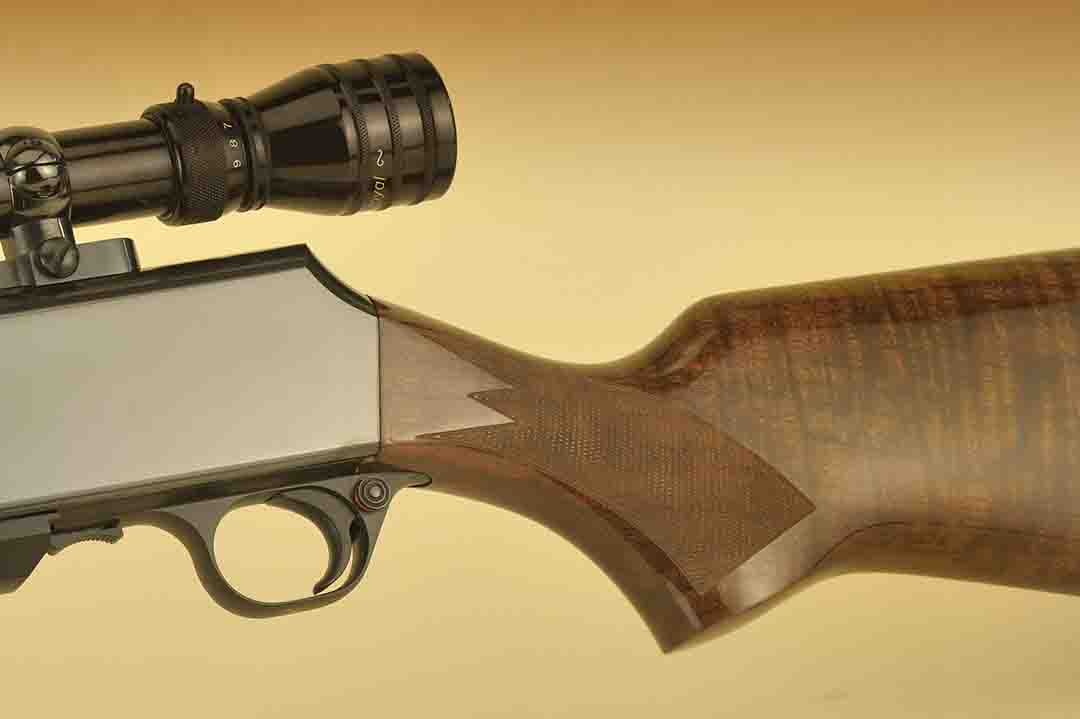
Of course, that got me thinking about the Browning BAR rifle. Sure, I’ve had my share of testing all types of semi-automatics in handguns, shotguns and rifles with most of my time going to the Benelli R1 and Remington Model 7400 that I found fairly accurate, but they were not as soft on my shoulder as I had expected. Talking to Joe and shooting his BAR semi-automatic in Montana for a final sighting-in really set me straight. Even with factory ammunition, his gun hit groups an inch and a half or less at the century mark. I was hooked, ordering one in the 7mm Remington Magnum upon my return home.
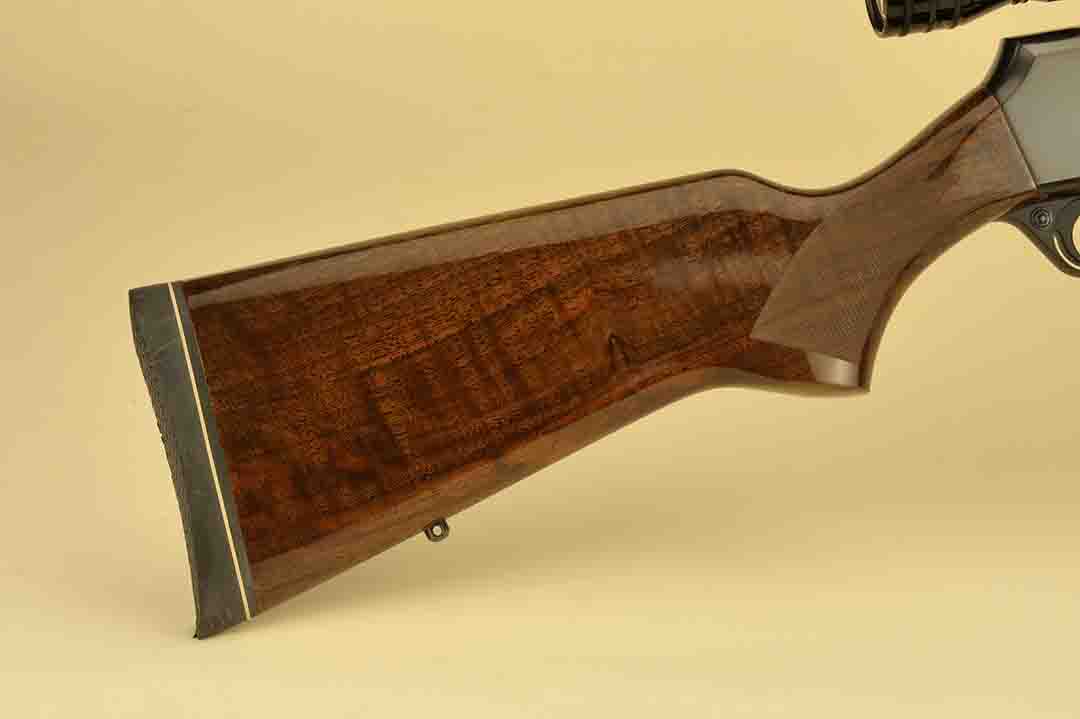
Considering the long history of Browning Arms, the BAR is a recent newcomer to the fold, which opened the door to a lot of shooters who wanted to use the higher-powered cartridges but because of recoil, stayed away. In any event, some 53 years ago, Browning introduced its first sporting semi-automatic rifle in the .243, .270, .308 Winchester and the .30-06 Springfield. To satisfy the magnum thirst for such a weapon, in 1968, the 7mm Remington Magnum was teamed up with the popular .300 and .338 Winchester magnums with the latter dropped from production in 1975.
Actually, design work started in 1963 and noting from a brief from Harmon Williams (former president of Browning) and other information, I found the content interesting. All were intent of keeping the BAR consistent with a “family appearance,” so a compromise was sought with the receiver for example, with features borrowed from the famed Auto-5 shotgun. They incorporated the celebrated humpback profile, but with less of a pronounced shape, toning it down a bit more to modern standards. A multiple 7-lug bolt for a strong lockup was next, which was secured within the rear portion of the barrel that led to the decision of chambering more powerful magnum cartridges.
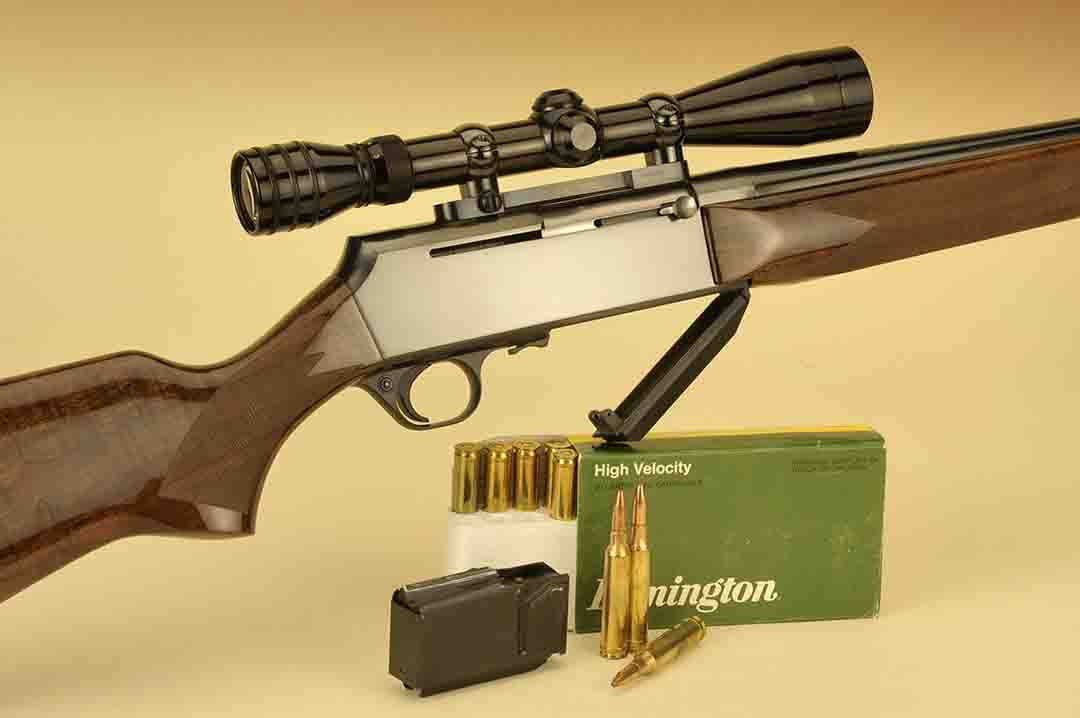
Naturally, in most cases, a gas-operated rifle offers a softer recoil sensation than a bolt or pump and the BAR does it in grand style. With my 7mm Remington Magnum, I was pleasantly surprised at the marked difference between this and other manually operated guns and I can see why hunters choose this gun in the larger, magnum chamberings. Spreading the recoil sensation over a longer period of time and with the inclusion of an internal buffer and rugged action and inertia block, to me the BAR excels in this field of hunting rifles, especially when it comes to looks and accuracy potentials.
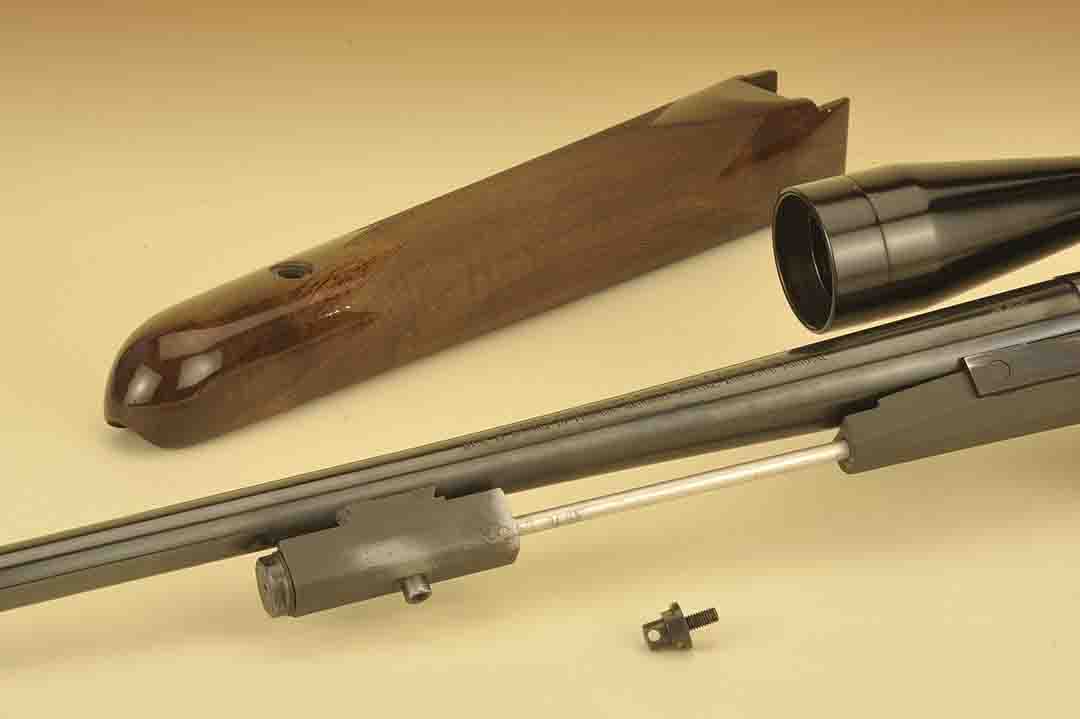
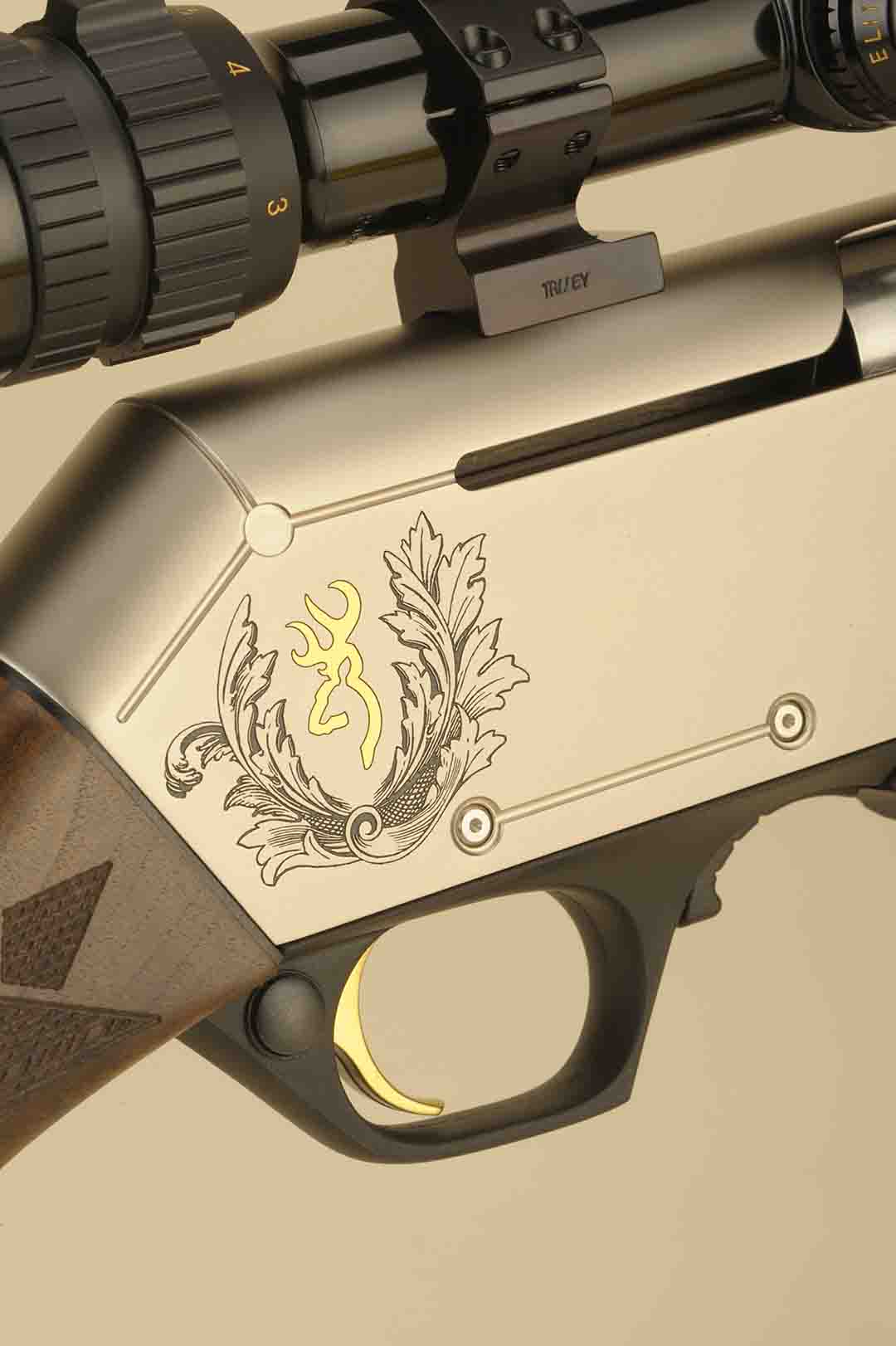
With a model lineup that includes the Mark II and MK 3, we will be discussing the former gun. The latter is an update on the original rifle with modern looks that will grab the attention of the more contemporary hunter. Naturally, being more recent, there is a choice of many finishes, stocks, barrel lengths and calibers. With my taste more to the higher end guns for looks alone, the model known as just the MK 3 (Third Generation) complete with a satin nickel receiver, oil finished Grade II stock and high relief engraving would be my choice. In the past, this gun and its variants, was also known as the Short or Long Trac gun before it moved into the more recent models.
Hunters who would like the more traditional BAR look would gravitate to the Mark II Safari grade, which is more to the appearance and styling of the original BAR rifle. Although my gun was purchased some years back, the current Mark II gun mimics the Grade I gun I have concerning how it looks, the feel and operation. For collectors, years past showed Browning had offered a Grade II (same as the Grade I but with an engraved receiver), along with Grades III, IV and V with highly-engraved and decorated receivers, fancy wood and specialized checkering patterns. Aside from all this, special models and Limited Editions filled out the line throughout the years.
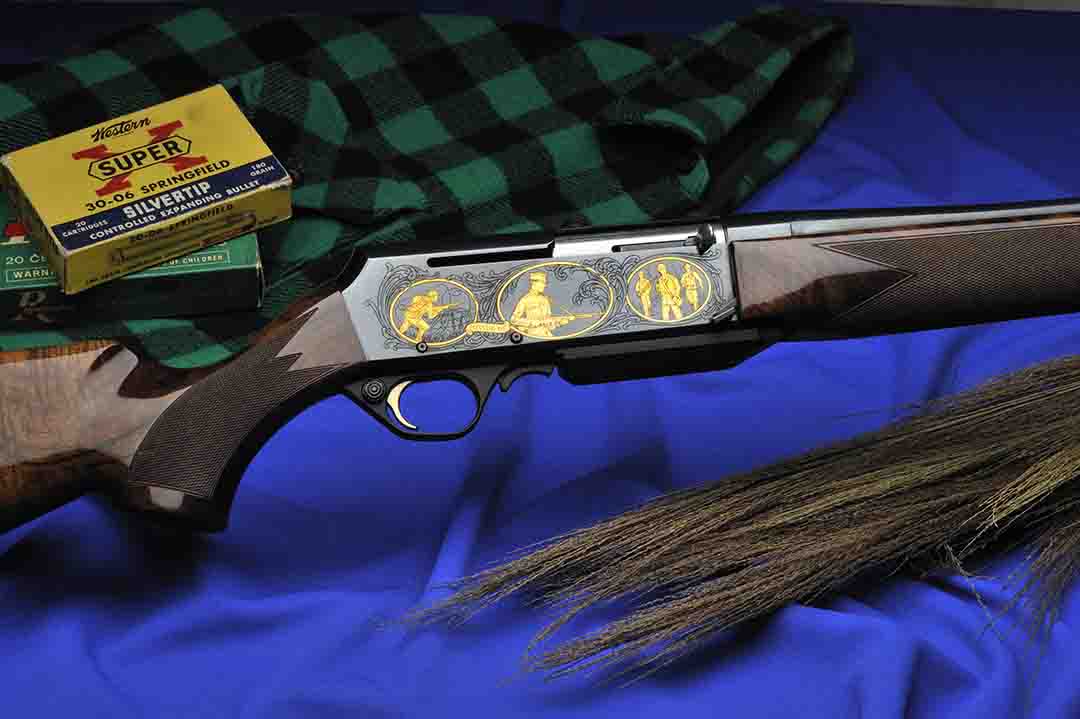
In the appearance department, it is hard to fault this gun with its select wood stock completed with a glossy, weatherproof finish. With previously made guns, figured wood was more of a standard item more so than today, and my gun has dark wood with a bit of fiddleback for character. During its design stage, it seems a lot of midnight oil was burned, as to me, it appeared that much thought went into the lines and design of the stock. Initially, when everyone was seemingly copying the “California” look with high combs with a fancy cheekpiece, the BAR was content with a more classic look. Holding the gun out on arm’s length, the influence of a bolt-action rifle with the rounded forend, well-proportioned forearm, all tapering back to the buttstock can be seen. The pistol grip has the right reach for the trigger finger when the hand is placed on the grip with the comb following through with the right dimension for the eye to center on the reticle of the scope.
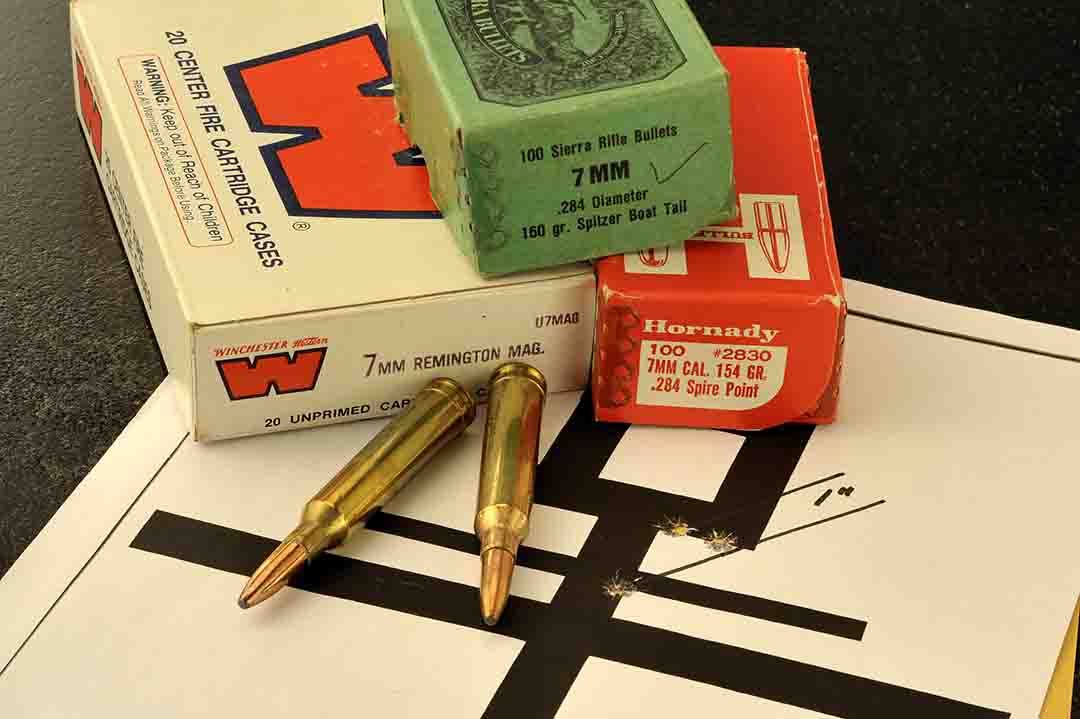
On the gun, there is more than an ample supply of checkering on both the forearm and the pistol grip. Since my gun was made some time back, I would assume it is all hand-cut, much before the age of computer generated checkering machines. Typical of Browning fashion, the checkering wraps completely around the forearm in a point pattern with a border to suggest a custom look. Inside the forearm is the gas-operated action and operating bar that ensured trouble free operation even with the higher-powered magnums. On the pistol grip, again one can see the value here with more checkering than it seems possible, considering the price tag. Complementing the gun, sling swivels and a classic-styled recoil pad finish the wood part of the gun.
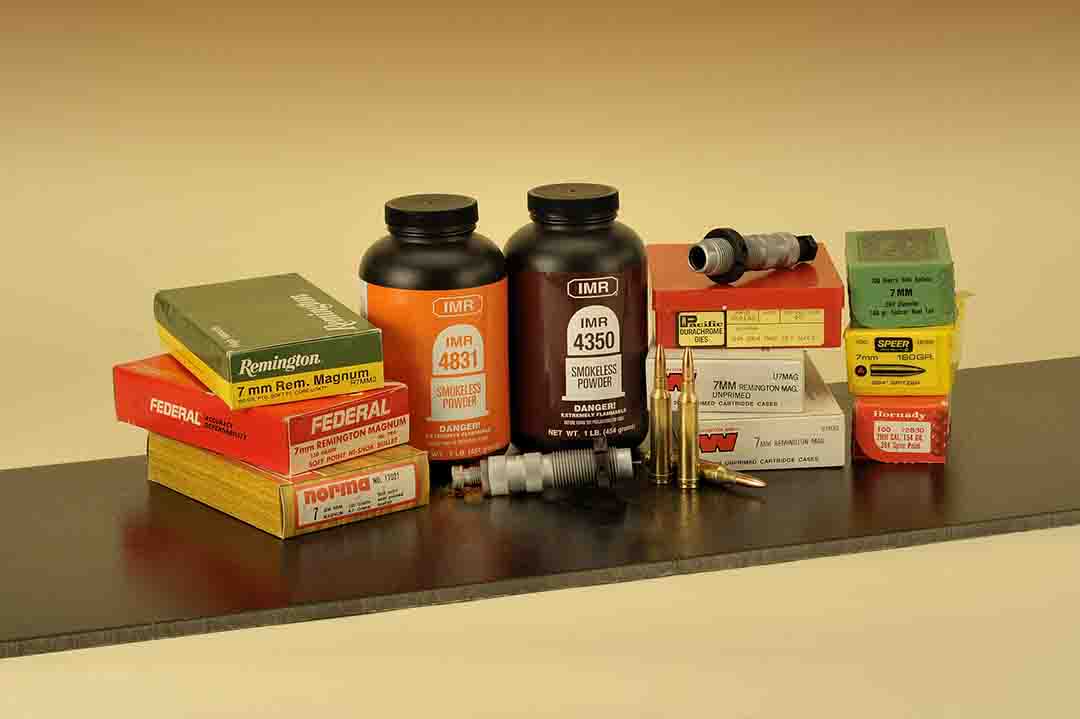
As you might have guessed, past and present day BAR’s show an accent of quality on all the metalwork. From the barrel to the receiver, all the polishing is smooth and of high quality befitting a gun of this stature. At the muzzle on my gun, there is a hooded sight with a rear sight, which I removed for scope mounting.
The receiver is the most impressive part of the gun. With a combined area of 32 square inches, which then lends itself to some fancy decoration in engraving with higher-grade models and high relief scroll engraving on current Mark II models. Within the top part of the receiver is the bolt port and its novel rotating bolt with seven locking lugs that are secured into the rear of the barrel after each shot. Trigger pull is a crisp 4 pounds and the safety, mounted behind the trigger, is a cross bolt design. These guns are equipped with a 3-, 4- or 5-round detachable magazine depending on caliber. Fit and finish of the gun in total on any gun I used or tested was first rate with nothing to complain about anywhere.
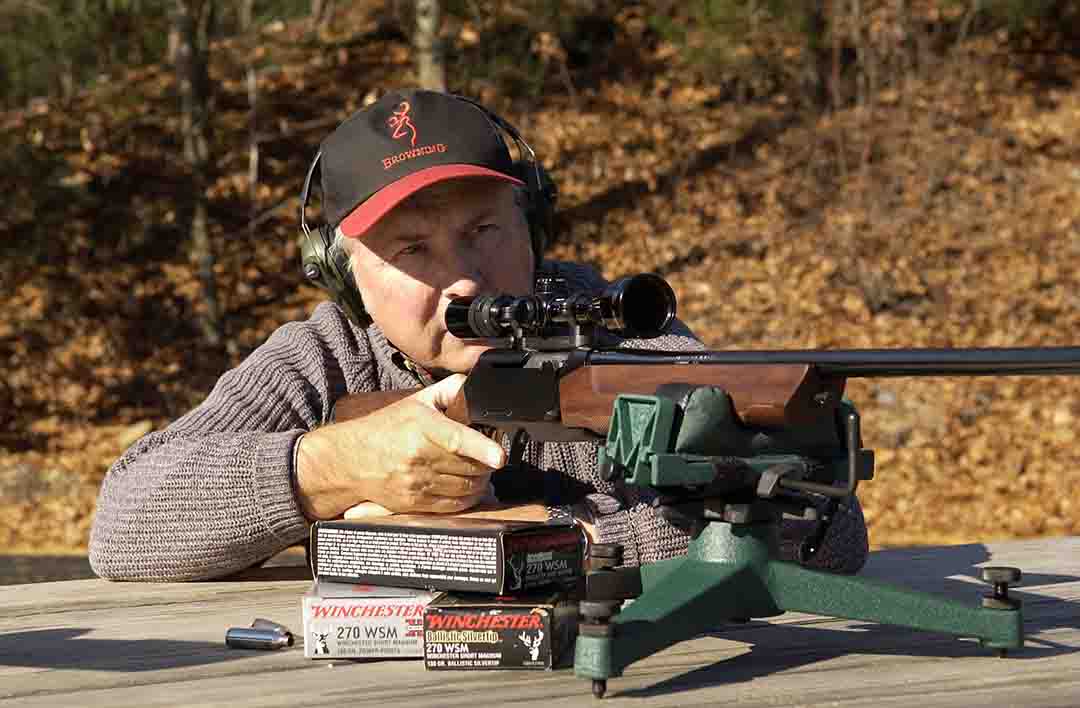
Chambered for the eight popular sporting cartridges, the lineup begins with the .25-06 Remington followed by the .308 Winchester, .270 Winchester, .30-06 Springfield and the .300 Winchester without the BOSS muzzle brake. If you want the optional brake, the choice is narrowed to the .270 Winchester, .30-06 Springfield and .300 Winchester. Due to the design of the gun and its recoil effect, I don’t think this brake is warranted, but if you have a physical problem, it will lessen the effect even more. As a footnote, if you opt for the more modern MK 3 rifle, chamberings do run from the .243 Winchester through the WSM calibers and up to the .300 Winchester Magnum.
Being teamed up with the popular 7mm Remington Magnum makes the Browning BAR a formable field weapon for all but the largest of western big game. Born in 1962, and while new to many shooters, the 7mm concept dates back as far as the turn of the century. Around 1912, there was the .275 H&H, a close cousin to the .375 H&H. Still later, wildcats started to rise with the .276 Dubiel, the .276 Newton and the .276 Newton Magnum, which according to research launched a 100-grain bullet over 65 grains of IMR-3031 powder for a then, unprecedented velocity of over 4,000 fps out of a 28-inch barrel with 1:12 twist. Moving on, the .280 Dubiel Magnum, then the .285 OKH with a unique duplex loading and the 7mm Weatherby Magnum.
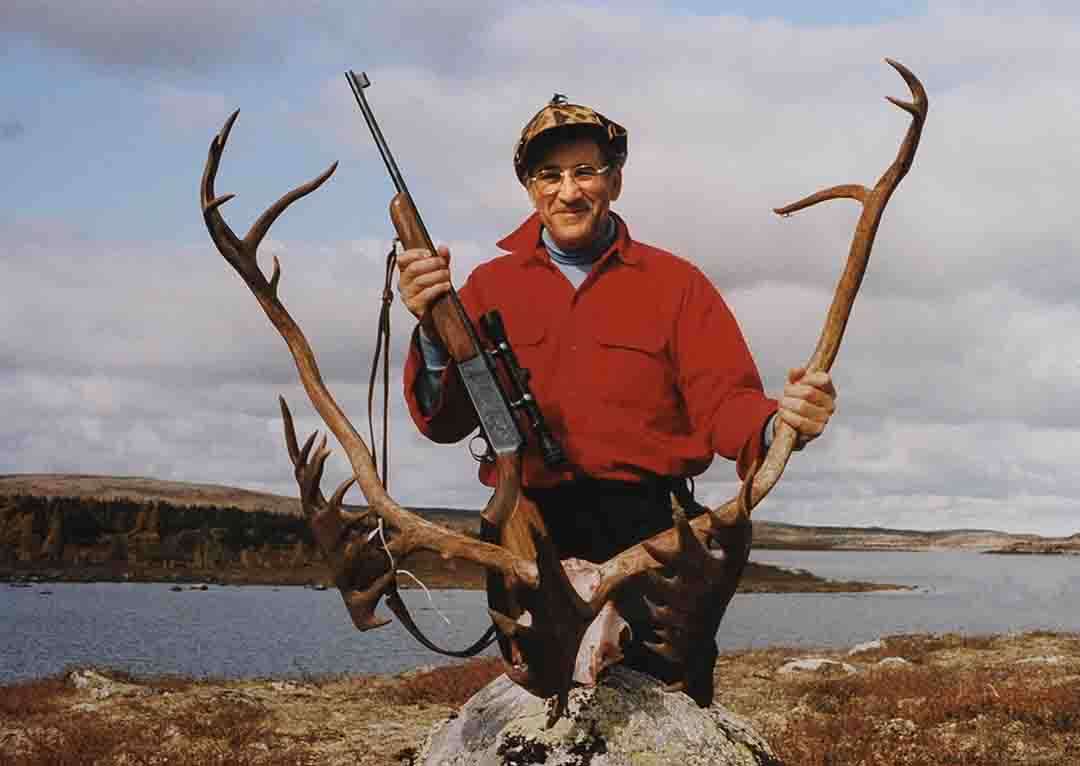
However, I believe it was through the efforts of the western hunter Lew Bowman and Remington working closely on his ranch, that the 7mm Remington finally saw the light of day. With a capacity of around 87.0 grains of water (as measured to the neck and shoulder juncture), the 7mm Remington Magnum may be unpleasant to shoot in a bolt or pump gun, but I found in a semi-automatic like the BAR, recoil levels are more than acceptable to even the intermediate and advanced hunter.
With that in mind, while there is a wide selection of factory ammunition to choose from in all bullet weights, I found handloading the way to go with no special attention needed with a semi-automatic rifle. Naturally, to do all this, a good set of dies is necessary although I never did need a small base set for functioning or accuracy with my BAR. For the best results with slower burning, larger stick powders, trickling is necessary for precision as well as the attention to the details one would partake to get the most out of any rifle.
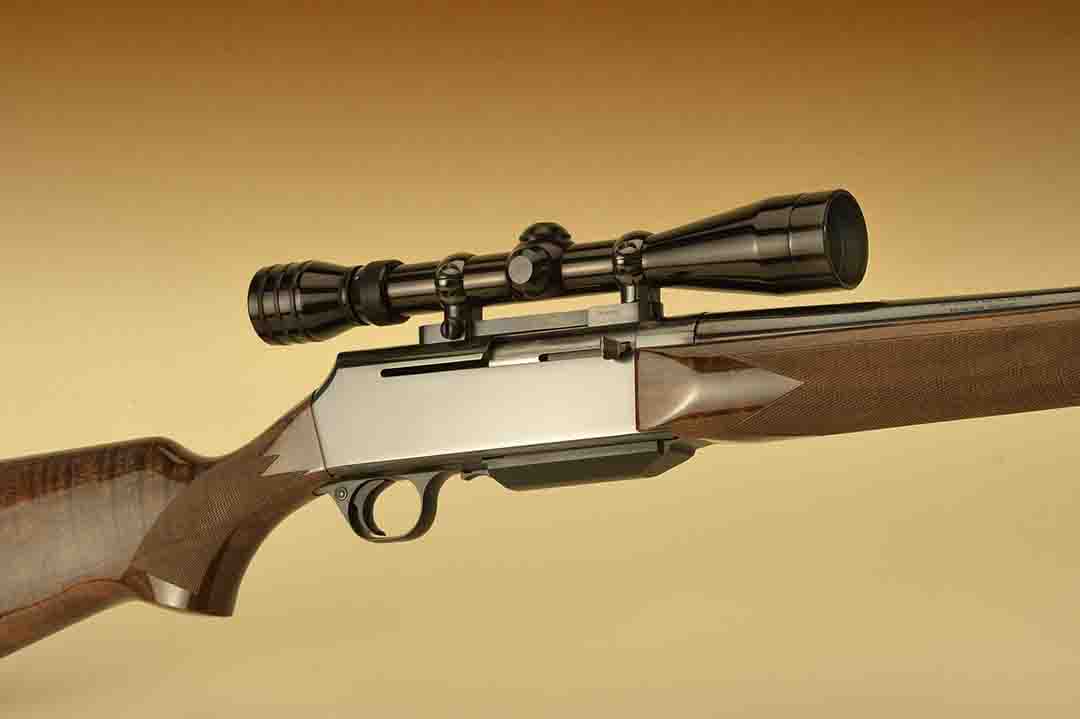
The only thing I would mention is to full-size all cases versus neck sizing to ensure complete and full cycling of the gun and more so, just before a hunt. I like to smoke, or mark a fired case while setting up the sizing die just to make sure the neck part of the die is working its way down far enough to ensure the proper tension on the neck. If you are working with a new gun, the assembly of a dummy cartridge complete with a bullet is a good way to make sure all is well before proceeding. Once the die is set, follow-up with the rest of the cases, clean, check for overall length and prime with Federal 215 primers.
Slow burning powders are the rule here. For those starting out, and to narrow down the field, I found the IMR-4350, IMR-4831 and H-4831 will give impressive results in accuracy and velocity readings without much work. Later, when handloaders want to broaden their base even more, they can venture into H-870, Norma MRP and IMR-7838. For velocities, in the 140-grain bullet range, expect around 3,150 fps, 154 grains 2,950 fps, 160 grains 2,850 fps and the heavy 175 grains, up to 2,900 fps with 66 grains of IMR-7828 for tight groups around or under one-and a half inches.
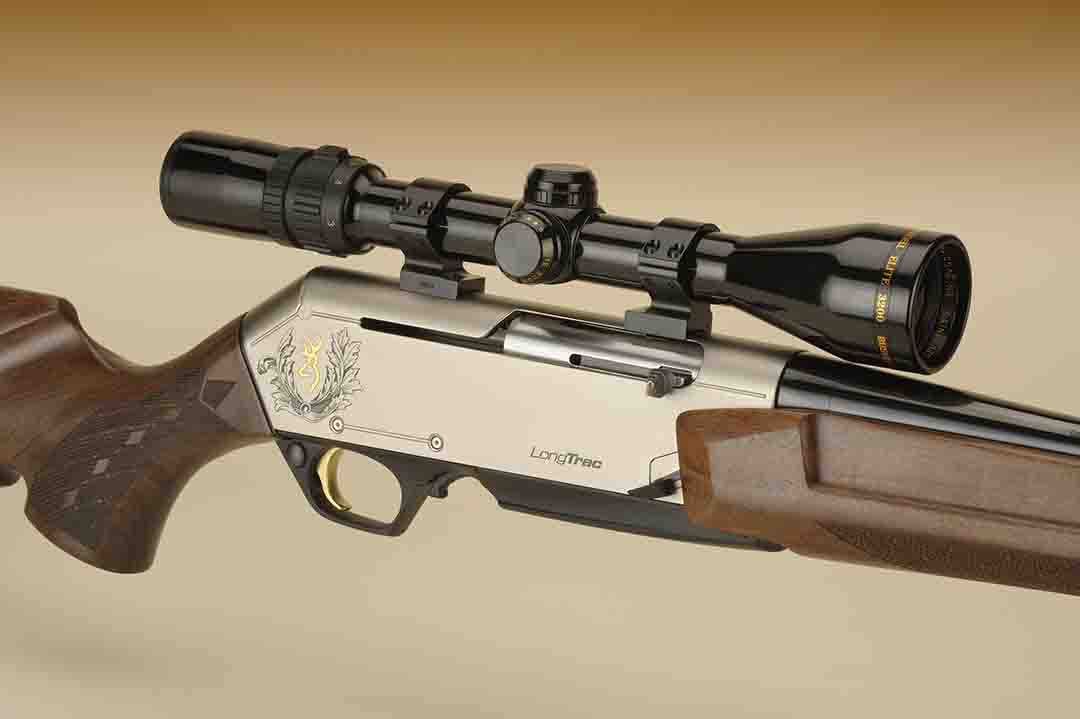
For my testing and shooting over long periods of time, it showed a wide majority of bullets by various makers are well suited to be used in the 7mm Remington. Common names like Hornady, Speer, Sierra and Nosler from 140 to 175 grains proved more than satisfactory when it came to powders still available during the pandemic at the various sporting goods and box stores with the BAR’s common 24-inch barrel length. The attached table included with this article, shows some of the better loads possible with the 7mm Remington Magnum in a semi-automatic sporting rifle like the Browning BAR.
In closing, a buyer could not go wrong with selecting the BAR chambered for the 7mm Remington. In many years past, the semi-automatic was frowned upon for serious hunting duties, but today, this combination is easy to shoot, a pleasure to reload, very efficient and in a worst-case scenario, factory ammunition is available in just about any part of the country.


